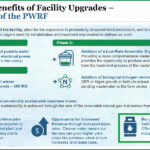
Ted Niblock
BioCycle June 2015
One of the few effective federal renewable energy policies in place right now is the Renewable Fuels Standard (RFS). Recent developments regarding this policy can be a bit difficult to follow, but a basic understanding of how it works helps a great deal.
First created in 2005 and then revised in 2007, the RFS is a fairly straightforward concept. Retail sellers of gasoline are required to mix into their fuel a certain amount of renewable fuel, and the amount, as a percentage, ratchets up very slowly every year. The original law was mostly an incentive to produce corn ethanol, and if you notice at the gas station that your pump contains some small amount of ethanol, that’s the RFS in action.
In 2007, the RFS was overhauled, adding specific requirements to encourage newer, nonethanol fuels including biodiesel, cellulosic biofuels and advanced biofuels. These new requirements are only a fraction of the total requirement, which is still mostly ethanol at the gas pump, and are designed to spur growth and innovation in these emerging sectors of the U.S. energy economy. An anaerobic digester facility that produces compressed renewable natural gas (biomethane) for use as transportation fuel qualifies for the “cellulosic biofuel” category, which is the most sought-after type of advanced biofuel. Fuels in this category are required to have a 60 percent reduction in greenhouse gas impact, and also count toward fulfillment of the other broader categories, since the different requirements are “nested.”
The U.S. Environmental Protection Agency enforces the law by requiring retail sellers of gasoline to blend a percentage of renewable fuels into the gasoline supply, meeting an annual target known as the Renewable Volume Obligation (RVO). The law sets the amount and annual increase of the RVOs, but gives the EPA discretion to adjust the targets. Those adjustments are at the center of the current RFS debate.
After mixing as much ethanol as they can into the actual gas sold, the retailers must then rely on a system of tradeable credits known as Renewable Identification Numbers (RINs) to achieve full compliance with that year’s RVO. A unit of renewable fuel produced but not sold for direct mixing at the gas pump generates a RIN, which then can be purchased by the retailers to finish meeting their RVOs. In the case of biomethane, all the fuel produced generates RINs since it cannot be mixed into gasoline.
Caught In The Crossfire
Hopefully that all sounds simple enough. Since the gas retailers have targets for cellulosic advanced biofuels, and there is not much cellulosic ethanol to mix in, they theoretically should be forced to meet the rest of their requirements by buying RINs. These RINs can only be generated by a handful of products, including biomethane, so there should be a healthy market for RINs from biogas projects. Unfortunately our young biogas industry is, as usual, caught in the crossfire between two much bigger players. The ethanol industry and the petroleum industry have been fighting over if and how the EPA should adjust the RVOs (which, remember, EPA has the authority to do).
Until 2013, the EPA was exercising its discretion by leaving the statutory RVOs in place, counting on the requirement to raise the price of RINs and bring all biofuels into greater production. The gas retailers of course sued the EPA, demanding that it exercise its discretion to calculate revised RVOs based on the predicted available biofuel as opposed to desired growth in production. This of course would lower the targets and reduce the value of the RINs from biogas, detracting from the whole point of a trading system such as the RFS. The gas retailers won their suit, and now the EPA must set more modest targets, which validates the accuracy of their predictions.
The EPA delayed making these RVO adjustments for 2014, 2015, and 2016, but released them on May 30. The new targets are lower than the ones in the law, and are the product of two basic rationales. The first impacts the overall target, which mostly affects corn ethanol, and results from something called the “blend wall,” which has nothing to do with the biogas industry. The cellulosic biofuel target is also lower than the law’s target, and goes down from 2013 to 2014, and then slowly rises, but well below the original schedule. This is the result of EPA following the rule from the gas retailers’ lawsuit, that it must make a prediction as to what will actually be available for purchase as opposed to ratcheting up the target to boost production and grow the advanced biofuel industry.
Of course, having a renewable energy incentive system based on tradeable credits and then lowering the targets whenever the dirty fossil fuel industry claims it can’t find any to buy seriously degrades such a plan. However, it’s still better than nothing, and RINs from biogas projects will retain some value. Further, with the settlement of the lawsuit might come more stability, and place more long-term value on the RINs.
Ted Niblock develops biogas projects for NewAg Development. His column for BioCycle, BioEnergy Outlook, first appeared in 2013.













